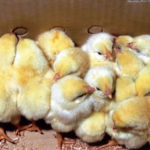NIGERIA is blessed with over 84 million hectares of arable land located across the country, but unfortunately, due to over dependence on oil, this land has been underutilized as many citizens abandoned agriculture and channel their efforts towards getting white collar jobs.
Presidency prays for Obasanjo to “get well soon”
Malay apple is one of the underrated agricultural product which has the capacity of lifting many from poverty if taken serious. It have been proven to thrive in Nigerian weather conditions, and can be planted in almost all the states across the country.
Malay apple, otherwise known as Syzygium malaccense, is a specie of flowering tree native to Malesia and Australia. It has been introduced throughout the tropics, including many Caribbean countries and territories such as Jamaica where it is known simply as ‘Jamaican apple’ or the more common Otaheite apple.
In Nigeria, it was introduced over fifty (50) years ago from research findings. As a tropical apple tree, it requires ample humidity, high rainfall, and no frost (cold condition). It grows quite well in many parts of Nigeria. Once these basic conditions have been met, the Malay apple trees need little else to thrive.
To start a Malay apple business, a farmer required one hectare of land which is about 15 plots of land, enough water is also required to make them thrive, especially during dry season.
It can be planted in homes, parks, gardens and established as apple plantation for commercial purposes. The Malay apple tree starts producing apples three (3) years after planting, while the temperate apple tree produces apples from the sixth year after planting.
Malay apple is majorly in three colors, red, green and cream with many varieties of each type. In Nigeria, the commonest type is the red colour, the green is scanty, while the cream colour may not be readily available now.
For the spacing, 5m by 5m is the minimum requirement, it could be wider than though. To ensure good yield, In a hectare a maximum of 400 Malay apple seedling is required.
It produces apples two or three times per tree per year. It is prolific producing about 1,000 apples per tree per harvest as it grows older, that is about 2,000 apples per tree per year. The average yield is 21 to 85 kg per tree. Malay apple tree grows vigorously on a range of soil types from sand to heavy clay. It tolerates moderately acid soil, reacts unfavorably to highly alkaline situations.
Malay apple is best planted when rain is steady, that is probably April/May, and it also requires fertilizer to boost its growth. The use of organic manures is required or inorganic (NPK).
It has a sweet sour taste. It also comes in three different shapes – oblong, obovoid and bell. The shelf life is 3 to 4 days. The apples stay between 17 to 19 days on the trees during harvest.
The Malay apple seed is a single oblate or nearly round seed. It is light brown outside, green inside. Some what meaty in texture. It has shown antibiotic activity and has some effects on blood pressure and respiration. it is medicinal in application. It is used to allay fever.
Malay apple starts production from the third year, and it can be harvested two to three times per an, this is unlike the imported apples that takes longer years before production. The farmer can also plant tomatoes, pepper, leafy vegetables alongside the Malay apple.
As at 2010, a seed was sold for N50 each, but now, each seed is N100 each. The germinated seeds are between 3 to 5 weeks after planting at the pre – nursery stage. The cost of each germinated seed is N150.
“The seed is N100 each. It involves raising the seeds into seedlings. You will start making money from the 10th week after planting. The seedlings production can be done at home. At the backyard and gardens. A minimum of 50 per cent returns on investment is guaranteed. There is a ready market for the sale of the seedlings especially from March to December each year
Malay apple is a strictly tropical tree and will be damaged by freezing temperatures. It thrives in humid climates with an annual rainfall of 152cm (60in) or more. It can grow at a variety of altitudes, from sea level up to 2,740m (8,990ft).
Basically, it is much bigger in size, much more attractive due to its red/wine colour, with a higher juice content, a unique wine aroma, crispy, sweet and sour in taste and with an oblate shaped, big and brown seed inside each apple, and these features distinguish it from the imported apple.
In Nigeria, it is presently grown, eaten and sold locally in states like Lagos, Ogun, Osun, Oyo, Ondo, Akwa Ibom, Bayelsa, Delta, amongst others.
No known disease has been identified with Malay apple for now, it could be due to the fact that Malay apple is still relatively new to Nigeria. Birds and Bats have been the only pest attacking the plant so far.
Malay apple do not store well in the refrigerator, as they are susceptible to cold. It is better kept on the counter, where it can stay for three to four days. It means that the apple does not store well under freezing form of refrigeration. The shelf life is prolonged under chilling form of refrigeration at a specific temperature.
Planting the apple can boost local fruit production, the consumption of fresh apples is healthy, without the use of any chemical preservative. The apples are highly medicinal, various parts are used as remedies for overcoming different health challenges.
Malay apple tree produces much more apples than the temperate apple tree, it will help Nigeria reduce import bill on apples from South Africa, Europe and Asia. It has wealth creation potentials for the people in the areas of production, processing into valuable products for local consumption and export, information and internet marketing.






